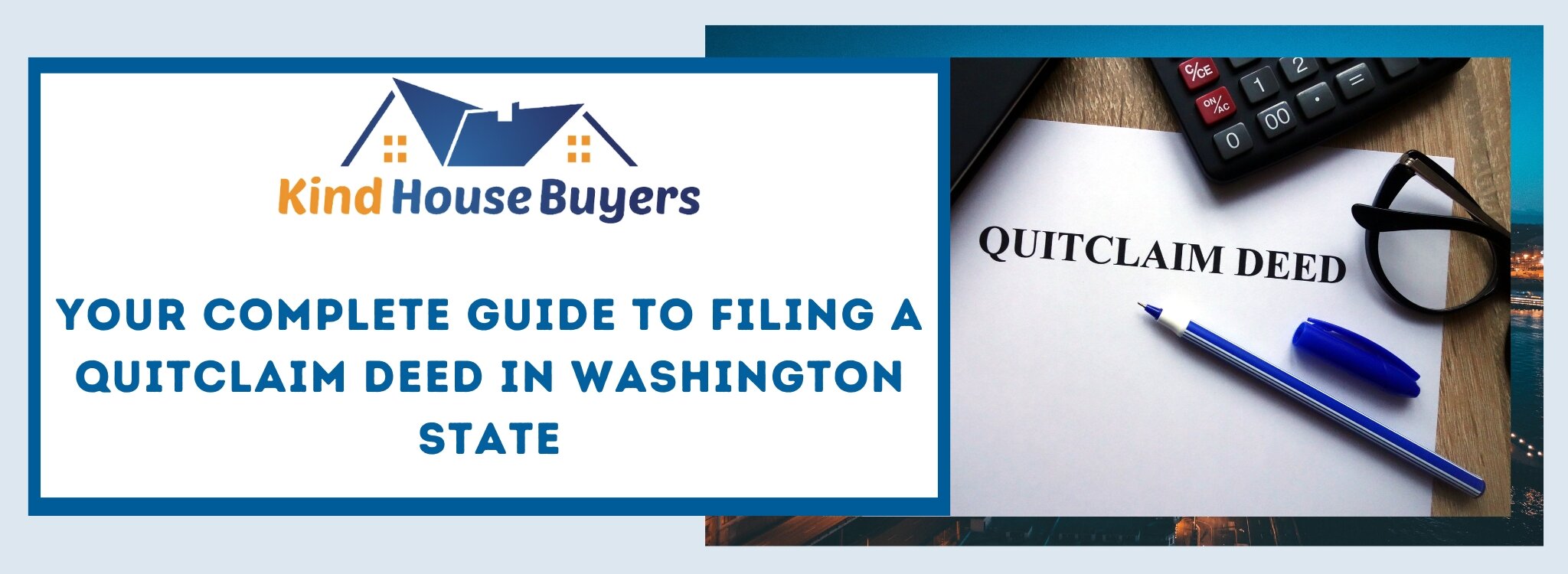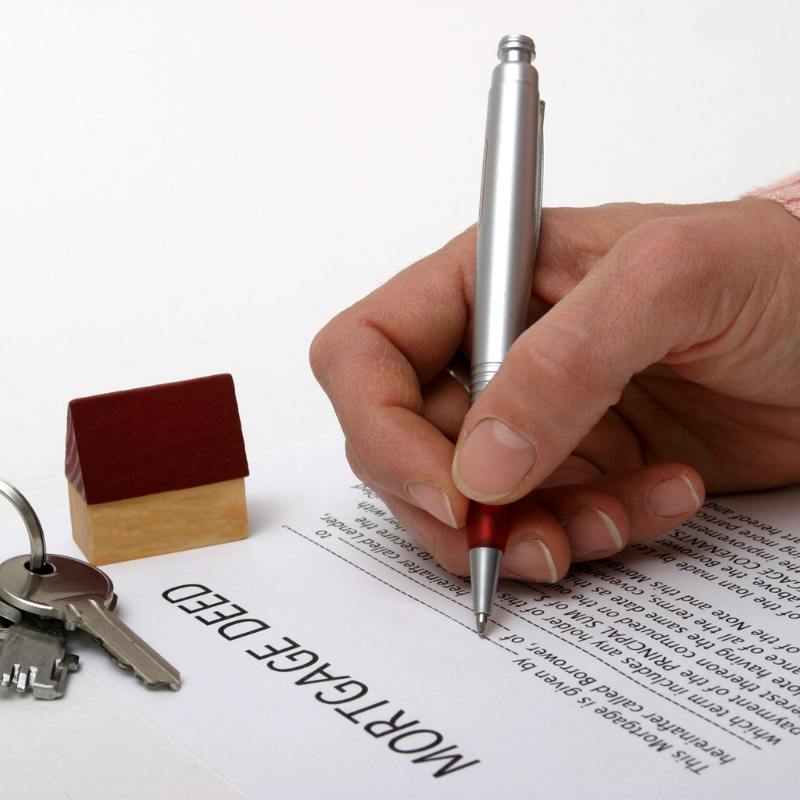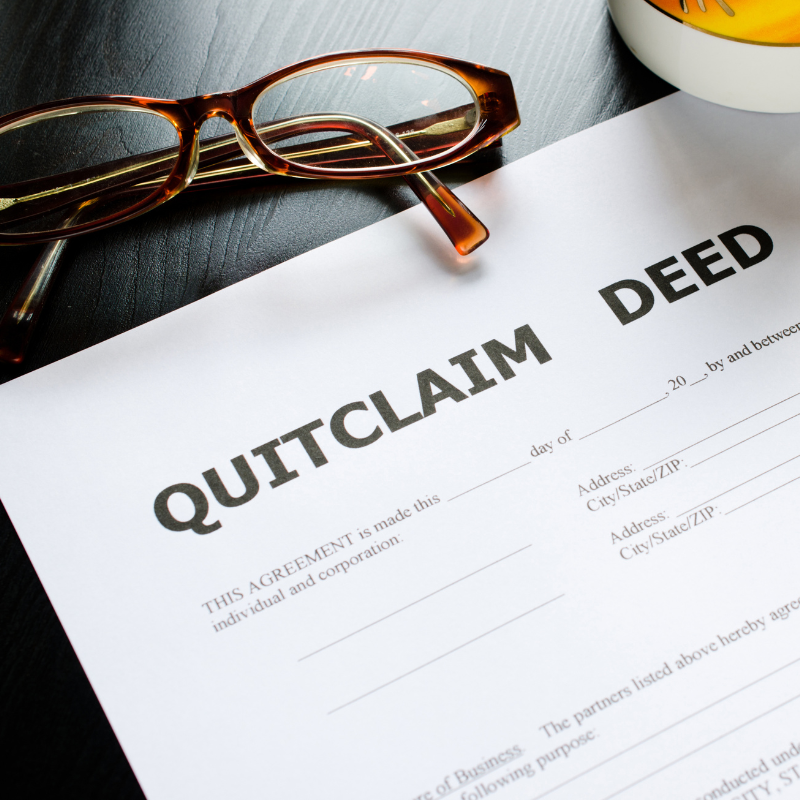
How To File Quitclaim Deed in Washington State: Forms, County Requirements, and More
Buying a home involves several processes—making offers, showings, paperwork, and negotiations. Sometimes, things don’t work out and you move on to the next prospect. But after a successful agreement, the home title can finally be transferred to your name.
However, a quick way of transferring property ownership is required in some situations. If you’re inheriting a house from a relative, sharing legal ownership with a spouse, or rectifying errors on the title document, a quitclaim deed is what you need for a hassle-free transfer.
So, how do you know if a quitclaim deed applies to your situation? What is the process for filing a quitclaim deed? What documents do you need to acquire?
In this guide, you’ll learn everything about Washington state quitclaim deed processing. From essential steps to country requirements, we’ve got you covered!
Understanding Quitclaim Deeds in Washington State

First, let’s define what a quitclaim deed is and how it differs from other types of deeds.
A quit claim or quitclaim deed is a fundamental aspect of real estate transactions in Washington. It is a simple and straightforward way of transferring ownership from a grantor to a grantee.
In this case, the grantor is the person who initially has a legal claim over the property while the grantee is the one who receives the deed. This transaction doesn’t involve a buyer and a seller, per se, and offers limited legal protection to the grantee.
In most real estate transactions, a warranty deed is used rather than a quitclaim. The former offers more protection to grantees since it ensures that there are no outstanding issues with the title like liens.
Meanwhile, the latter only transfers the grantor’s rights and whatever interest they have in the property. If the property has an existing mortgage, the grantor is still responsible for the loan and other real estate taxes.
Since quitclaim deeds don’t require extensive and expensive property records, the process can be fulfilled by the two parties involved even without an attorney. However, it’s still customary to do so to avoid legal and financial repercussions.
In Washington, quitclaim deeds must contain the following information to be considered legal:
- The document must identify the grantor, grantee, and their addresses.
- It must describe the property and define the transaction as a quitclaim.
- It must state that the grantee receives the legal ownership of the property the grantor previously held.
- It should include the date and notarized signatures of the grantor and grantee.
Moreover, quitclaims are not suitable for typical commercial or residential real estate purchases. There are specific use cases for this type of deed.
Why You Might Need a Quitclaim Deed in Washington
Since a quitclaim deed generally comes without warranties or guarantees, they are reserved for situations wherein the grantor and grantee have an established relationship. Here are some sample cases when you need a quitclaim deed:
1. Transferring a Property to a Family Member
There are many cases when a family member wants to transfer property ownership to one of their relatives. This is quite common with parents who want to give real estate to their children.
A quitclaim deed is the fastest way to transfer a title to a family member without passing a mortgage obligation.
2. Adding Your Spouse’s Name to the Property Title
If you purchased a house before getting married, you might consider including your spouse’s name on the title once you’re wed. In this situation, a quitclaim deed is what you need.
Acquiring a quitclaim deed also offers a quick solution if you want to add their name after obtaining a mortgage while still single.
3. Transferring Ownership to Your Spouse After Divorce
After divorce, a spouse may have a rightful claim to their previously shared property. To successfully remove the partner’s name from the title and have sole legal ownership, they need to file for a quitclaim deed.
4. Removing a Name To Your Mortgage or Deed
When a homeowner needs refinancing for a house, they might choose to remove a co-owner from the deed to increase their chances of getting better interest rates. In this scenario, filing for a quitclaim deed form is necessary.
5. Fixing Mistakes on the Title
Misspelled names, missing signatures, and other errors can appear on a title. You can use quitclaim deeds to rectify these errors without affecting your mortgage or ownership status.
Fixing these mistakes is crucial to avoid complications in future property transactions and clear up potential family disputes.
Once the quitclaim deed form is signed by the grantor and accepted by the grantee, the document is considered effective and legal. However, for it to be considered an official record, the deed needs to be filed with your local county office.
Note: A quitclaim deed can be contested or reversed under specific circumstances, such as fraud or misinterpretation. To revoke or execute the deed, the person challenging it must gather proof and invite witnesses to strengthen their case in court.
Steps on How to File a Quitclaim Deed in Washington State

If you’re curious about how to file a quitclaim deed in Washington state, you must be aware of some fundamental steps. Understanding the procedure for filing this document can guarantee it’s enforceable and protect both parties’ best interests.
Step 1: Obtain a Quitclaim Form
To start, you should obtain a Washington state quitclaim deed form. But where do you get it?
In Washington, there are several ways to acquire real estate forms. For quitclaim deeds, the easiest way is to download one online for free. Check your county recorder’s website or local government’s recorder site for downloadable forms.
You can also ask your attorney or a real estate expert for a quitclaim form. If none of these options work, you can try making a quick search by inputting “[Enter county name] Country Quitclaim Deed Form” on your preferred search engine.
Step 2: Fill Out The Quitclaim Deed Form
Once you have a quitclaim form, it’s time to fill it out with the right information. First, ensure that the first page includes the following data:
- Assessor’s Parcel Number (APN): This is a unique number assigned to a property by Washington’s tax assessor office. The APN is used for file recording and tax purposes. This can be found in your valuation notice, tax bill, or deed.
- Legal property description: Describing your property involves writing down your APN along with your city and county in Washington. You also need to copy the exact legal description of the property on the existing deed.
- Grantee’s and grantor’s names: Identify yourself as the grantor by indicating your full legal name. If the property has multiple owners, their names should be included as well. The grantee’s full legal name should also be written to know who you’re transferring the property to.
- Preparer and “Return to” Information: After completing the required content of the deed, you need to indicate who prepared the document and who it should be addressed to after recording.
After verifying that the information in the quitclaim form is correct, the grantor must sign the document in the presence of a notary public.
Step 3: Have the Quitclaim Deed Notarized
According to Washington state law, the grantor is required to sign and print their name in front of a notary public. This will make the quitclaim deed form official and valid for any use and business in the future.
The notary public serves as a legal witness and to certify the ownership transfer, they will provide their signature and seal to the form. Once finalized, you should make at least two copies of the document for you and the grantee.
Step 4: Submit the Quitclaim Deed Form To the County Recorder’s Office
After getting a notary seal, turn over the original document to your county’s recorder’s office for the final process.
Here, the transaction is recorded for public filing. If your county requires fees and additional documents, you must file them along with the quitclaim form. The record fee in Washington state typically costs less than $100.
Essential Documents Needed for Filing a Quitclaim Deed in Washington State

Each county in Washington may have different form requirements for filing a quit claim deed. Asking your local recording division office before filing or checking your county recorder’s website can give you a list of the required paperwork.
Here are some examples of the documents you need to submit along with the quit claim deed form:
- Real Property Recordation and Transfer Tax: This document involves the taxes imposed by local governments on the recording of documents related to the transfer of real property. The recordation tax is typically a fee for officially recording the deed in the public records, while the transfer tax is a tax levied on the sale or transfer of property ownership. Both taxes are often required at the time of filing a quitclaim deed and are calculated based on the property’s sale price or assessed value.
- Affidavit Addendum: This is a supplementary document that provides additional information or clarifications to the original affidavit submitted during a property transaction. This addendum includes signatures required by all
Parties, details that were not covered in the initial affidavit, corrections, or further declarations that are necessary to comply with legal requirements.
- Real Estate Excise Tax Affidavit: This is a form used to report and pay the excise tax owed on the sale or transfer of real estate in Washington state. The affidavit must be completed and submitted to the county treasurer’s office as part of the deed filing process.
- Exemption from Recordation of Transfer Taxes: This document certifies that a particular property transfer is exempt from the recordation of transfer taxes. Exemptions can apply in specific situations, such as transfers between family members, transfers to a government entity, or other legally defined exemptions. The exemption form must be submitted along with other filing documents to ensure that the property transfer is correctly processed without imposing unnecessary taxes.
Note: Supplementary documentation for claiming exemption from recordation and/or transfer taxes is required. All forms, tax documentation, and affidavits must be notarized and reviewed before submission for filing.
Lastly, be prepared to pay the associated fees with filing your quitclaim deed. While the cost varies from county to county, it typically starts with a base fee, a fee for each additional page of your document, and other existing fees.
County Recording Requirements: A Focus on King County
Now, let’s focus on the recording requirements for a specific county in Washington: King County. The county’s website offers a detailed overview of how to file a quitclaim deed form to give you further tips on the process.
King County accepts fulfilled quit claim deed forms bought from stationery or office supply stores so you don’t have to worry about finding a downloadable form online.
However, grantors should ensure that the document meets Washington state standards in terms of size, clarity, or other characteristics. A 50$ non-compliance fee can be incurred if you don’t meet formatting requirements.
![how to fill out quitclaim deed in market_city]](https://image-cdn.carrot.com/uploads/sites/25870/2024/02/how-to-fill-out-quitclaim-deed.png)
Moreover, their recorder’s office doesn’t offer assistance in filling out the form. Upon submission, the quitclaim and all additional documents required should be complete and notarized.
You need to submit a completed and signed Real Estate Excise Tax Affidavit, stating that real estate excise tax (REET) has been fulfilled by the grantor prior to the title transfer.
You may also be asked to submit an Excise Tax Supplemental Statement if you qualify for a tax exemption.
Once submitted, the publicly recorded documents can’t be removed or changed. If you realize there’s an error in your document, you have to file for a new record.
The original document or a certified true copy of the original must be presented along with the correction/s made and a declaration on the first page stating the correction/s.
Key Takeaways: Ensuring a Smooth Quitclaim Deed Filing Process in Washington State
Filing a quitclaim deed in Washington involves several key steps: understanding the purpose of the deed, accurately completing the required forms, and submitting all necessary documents to the appropriate county office.
Remember, each county may have unique requirements, so it’s crucial to check with local offices to avoid any issues. If you’re uncertain about any part of the process or dealing with a complex property situation, seeking professional legal assistance can be invaluable.
If you want to sell your property to a cash buyer instead, reach out to us at Kind House Buyers! We offer reasonable deals regardless of your house’s condition, even if the property rights are transferred through a quitclaim deed.
Call us today at (253) 216-2497 to know your options!
Other Blog Articles You May Enjoy
Sell your Washington house without a Realtor 75% Faster
No Hidden Fees or Commissions. Sell Your House As-Is And Close On The Day Of Your Choice. Fill Out The Form Below.

![Sell My House For Cash [market_city]](https://image-cdn.carrot.com/uploads/sites/25870/2022/04/Sell-My-House-For-Cash-WA.jpg)


